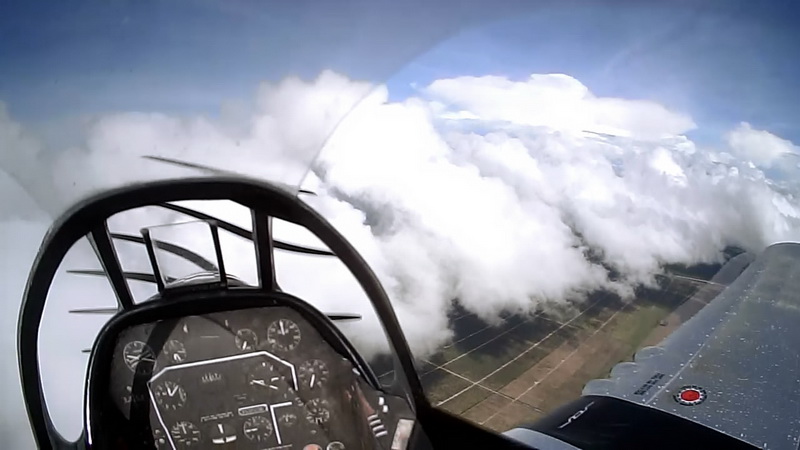
About
 This is a Park Flyer grade airframe most popularly enjoy by VLOS flying around the club field or designed to fly around small park. Mini size frame wing spanned at 960mm powered using small 1300mah 3s 35c max. Originally manufactured by ART-TECH sold the model as "P-51D Mustang" as RTF. Re-branded version available at HobbyKing.com
This is a Park Flyer grade airframe most popularly enjoy by VLOS flying around the club field or designed to fly around small park. Mini size frame wing spanned at 960mm powered using small 1300mah 3s 35c max. Originally manufactured by ART-TECH sold the model as "P-51D Mustang" as RTF. Re-branded version available at HobbyKing.com  as PNF which slash the price by half making it more affordable but some nice scale decals are missing and extra Hobby King label are stamped on the back fuselage which user can manually removed easily by peeling. By late 2013 the latest batch at HK site include optional retract bay and flaps ready. The inspiration to fly it as scale FPV platform came from my childhood dream: "I love Mustang and i dream to fly one someday".
as PNF which slash the price by half making it more affordable but some nice scale decals are missing and extra Hobby King label are stamped on the back fuselage which user can manually removed easily by peeling. By late 2013 the latest batch at HK site include optional retract bay and flaps ready. The inspiration to fly it as scale FPV platform came from my childhood dream: "I love Mustang and i dream to fly one someday".
As a normal park flying VLOS its a fun and floaty plane to fly. Enough power to do radical aerobatic maneuver almost 70% what my PITTS SPECIAL can do and both came from the same manufacturer with completely the same flight hardware setup (except Pitts have single 1x servo for 4x ailerons as opposed to 2x servo on Mustang).
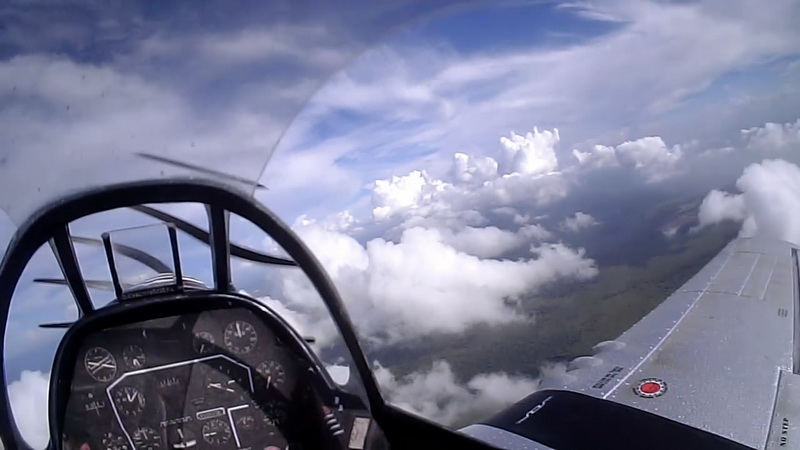
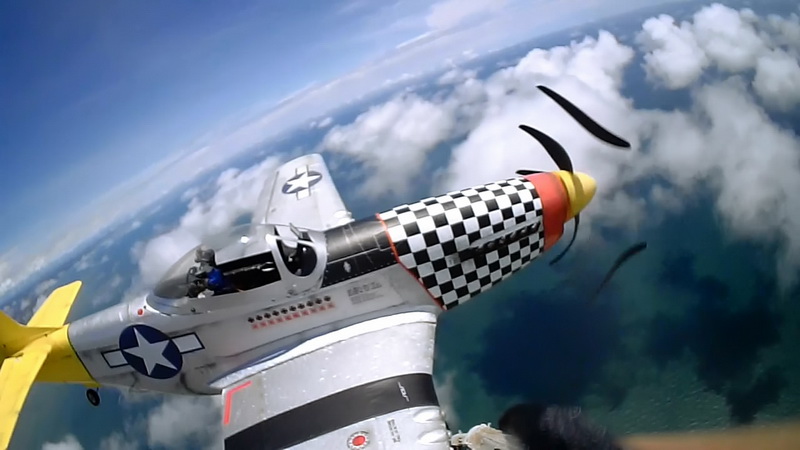 Model specification & setup
Model specification & setup
Airframe type: Scale low winged- War-birds
Branding/Manufacturer: ART-TECH
Model name variant: P-51D Mustang
Material build: EPS foam
Wingspan: 960mm
Length: 840mm
Stock airframe weight: 500 gram
Full FPV flying weight: 715 gram
Aileron: 2x 9g servo
Elevator: 1x 9g servo
Rudder: 1x 9g servo
ESC: 30A
Motor: DAT700/700kv (3s)
External BEC: 5A/5V
Propeller: 4 blade 10x8" scaled "HAMILTON STANDARD" replica
Radio receiver: Frsky teleme try 8ch
try 8ch
Radio receiver antenna: diversified DIY di-pole antenna
Battery: 1x 2200mah 2s~3s 25c
Center Gravity: 1/3 from the front leading edge of the wing.
My DIY FPV specification
Camera: 808 #16 V2 HD with live video out
Secondary camera: None
Camera pan/tilt mechanism: 9g HXT900 (180 deg mods)
OSD: Arkbird OSD/RTH/GPS V2
Flight Control board: Arkbird OSD/RTH/GPS V2
Video transmitter: Boscam 5.8ghz
Video antenna: DIY tuned Clover Leaf
Battery: Shared with main.
Building
 Its not easy to build and setup FPV inside such a narrow and slender fuselage. Getting the right CG (Center Gravity) placement to avoid "Pendulum effect" is a cautionary where builder should not ignore. The airframe by manufacturer specification only allow fitting of max 1300mah 3s lipo, however further research through on-line r/c community the airframe able to accept bigger more capacity lipo pack at optimal 2200mah 3s 35 size on its nose cavity thus the power provide 1.2kg of thrust through its upgraded huge 4 bladed scale propeller. The
Its not easy to build and setup FPV inside such a narrow and slender fuselage. Getting the right CG (Center Gravity) placement to avoid "Pendulum effect" is a cautionary where builder should not ignore. The airframe by manufacturer specification only allow fitting of max 1300mah 3s lipo, however further research through on-line r/c community the airframe able to accept bigger more capacity lipo pack at optimal 2200mah 3s 35 size on its nose cavity thus the power provide 1.2kg of thrust through its upgraded huge 4 bladed scale propeller. The  remaining sensitive electronic hardware are located at further rear tail to compensate the overall CG, to distance RF interference and placed almost lower baseline of axial roll CG. Unwanted RF interference are lowered by removing unwanted metal or solid object and uses thin wire to reduce current wastage, light weight and RF influences. Most of my build works concentrating removing redundant wires, pin, plugs and remove other unnecessary weight to make the total flying weight of the airframe lighter, floaty, less weight inertia during dive
remaining sensitive electronic hardware are located at further rear tail to compensate the overall CG, to distance RF interference and placed almost lower baseline of axial roll CG. Unwanted RF interference are lowered by removing unwanted metal or solid object and uses thin wire to reduce current wastage, light weight and RF influences. Most of my build works concentrating removing redundant wires, pin, plugs and remove other unnecessary weight to make the total flying weight of the airframe lighter, floaty, less weight inertia during dive  impact and improve overall motor thrust stamina. Since i like to keep my plane looks as scale as possible, all hardware and modules are well hidden inside fuselage & away from normal external view to preserve the original looks of a real P-51D Mustang without looking ugly with protruded cameras, antenna and etc like typical FPV glider setup that ruin the ecstatic looks of genuine War-birds, at the same time keep things aerodynamic for the airflow.
impact and improve overall motor thrust stamina. Since i like to keep my plane looks as scale as possible, all hardware and modules are well hidden inside fuselage & away from normal external view to preserve the original looks of a real P-51D Mustang without looking ugly with protruded cameras, antenna and etc like typical FPV glider setup that ruin the ecstatic looks of genuine War-birds, at the same time keep things aerodynamic for the airflow.
Just like my Drifter Ultralight this mustang also installed with ARKBIRD OSD/GPS/RTH as my fail safe and insurance against signal loss or anything beyond my control since i like to fly long distance. This system will take control autonomously or autopilot mode if radio and video signal are lost and make a "U-turn" back to my control.
FPV building level difficulty/rating: Hard/Advanced (1/10)
FPV equipment setup grade: Professional
Building hours required: 52 hours
Skill required: Soldering/Foam cutting
Critical issues during installation: Keeping the weight to minimal and crampy/narrow fuselage.
Required additional mods/must do improvement: Beef up the motor mounting and propeller balancing.
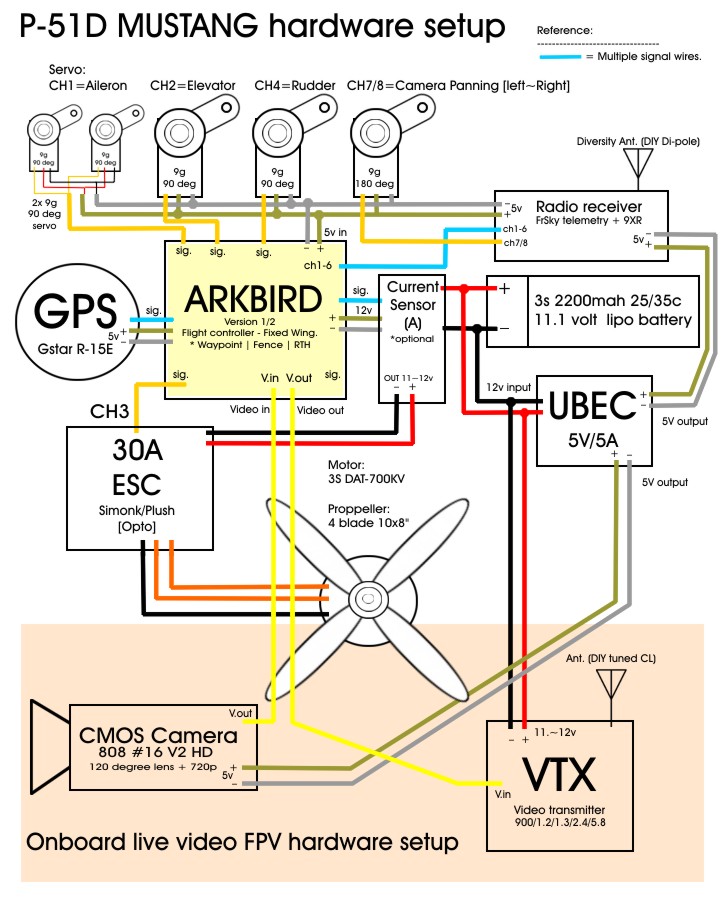
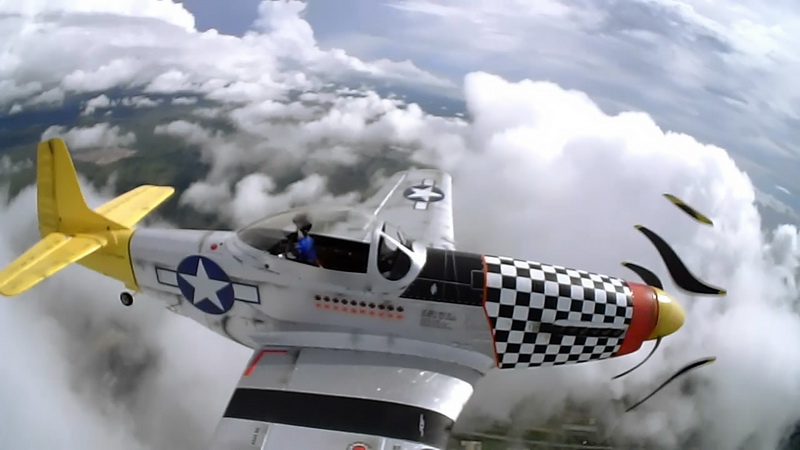
FPV flight characteristic and performance
 If flying an FPV glider is like driving a TOYOTA PRIUS then i must say flying this P-51D Mustang is like driving a LAMBORGHINI DIABLO of the skies. Rare and exotic FPV
If flying an FPV glider is like driving a TOYOTA PRIUS then i must say flying this P-51D Mustang is like driving a LAMBORGHINI DIABLO of the skies. Rare and exotic FPV  airframe ever to grace over the clouds. It has surplus of power and endurance to travel far places and easily climb at any altitude at will, survived the most harsh humid weather condition ever encounter by any platform and the smallest airframe to gain the same flight characteristic and achievement of common bigger sized FPV/UAV platform in the market. Yet it uses only smaller amount of power supply to sustain throughout the flight when compare against bigger platform that uses more than 3300mah >> 6000mah at
airframe ever to grace over the clouds. It has surplus of power and endurance to travel far places and easily climb at any altitude at will, survived the most harsh humid weather condition ever encounter by any platform and the smallest airframe to gain the same flight characteristic and achievement of common bigger sized FPV/UAV platform in the market. Yet it uses only smaller amount of power supply to sustain throughout the flight when compare against bigger platform that uses more than 3300mah >> 6000mah at  4s configuration wing spanned at minimal 1.4 meter at 1.5~2kg. This platform break the common traditional FPV beliefs that smaller non-glider like plane not able to FPV longer range, this airframe proved the opposite.
4s configuration wing spanned at minimal 1.4 meter at 1.5~2kg. This platform break the common traditional FPV beliefs that smaller non-glider like plane not able to FPV longer range, this airframe proved the opposite.
When i first time fly FPV in scale War bird behind the cockpit, the aura of FPV flying is completely different than conventional FPV glider like platform. Since i'm flying like what real pilot does in cockpit seating position; the view are very restricted especially the frontal nose obstruction, ground viewing is limited, judging the AOA level is difficult, difficult to take-off & land, unpredictable "sink-rate" and ground proximity flight is very challenging. Recommended FPV pilot to pilot this plane are the ones that have experience flying a low winged FPV plane or at least experienced on a "Super Cub" like platform. When it comes to long range flight and ability to bail out from harsh weather condition the P-51D Mustang took 1st place among my fleet of FPVs with ES Drifter in 2nd and Pitts comes in 3rd. Its the Jack of all trades.
Minimum level of VLOS flight experience required/flight-hours: Advance(420 hour)
Minimum level of basic FPV flight experience required/flight-hours: Intermediate (215 hour)
Nature of platform handling experience/skill required: Glider, scale and acrobatic flight(Professional)
Self leveling capability in thumbs-off stick situation: No
Take-off & landing difficulty: Medium
Hand launch: No
Max speed: 90~110~km/h
Min speed before stall: 15~32km/h
FPV flight/radius: 4~12km max (given above FPV spec/setup)
Max altitude: -
Bail-out/fail safe recovery altitude limit: 30~50m
FPV safe distance range for testing: 800~1000m (Open field)
High angle of attack (AOA) tolerance limit before stall: 30 degree (32km/h)
Ground "STOL" (Short Take Off and Landing) capability/thrust%: Takeoff 20m (65%)/ Landing 20m (25%)
Altitude climbing power/thrust%/AOA angle: 1 sec/per-meter at 75% thrust/45 degree
360 degree turning radius clearance/holding pattern: 15m
360 barrel roll/loop acro flight: Yes (Aerobatic)
Control expo - aileron: 45% (low to high)
Control expo - elevator: 45% (low to high)
Control expo - rudder: 45% (low to high)
Control end point - aileron: 75% (low to high)
Control end point - elevator: 100% (low to high)
Control end point - rudder: 100% (low to high)
Flight time: 25~35 min
Ground spotter visibility (LOS): 400~500m
Safety issue
 The only cautionary tips i can give is FPV pilot must aware of "negative pendulum effect" where the axial CG point is mostly above the wings which it is very typical for this war-bird model. It will tends to go upside down if roll countering is not constantly monitored and controlled. Usually happens when pilot lost "horizontal reference view" of the
The only cautionary tips i can give is FPV pilot must aware of "negative pendulum effect" where the axial CG point is mostly above the wings which it is very typical for this war-bird model. It will tends to go upside down if roll countering is not constantly monitored and controlled. Usually happens when pilot lost "horizontal reference view" of the  environment horizon especially inside the fog, haze, clouds, cockpit wet condensation or anything that blocked the VFR visual range from inside the cockpit. AP assisted flight using gyro or any form of stabilization is only temporal counter measure regardless if its at RATE MODE or HEAD LOCK. Still FPV pilot manual flight skills is highly compulsory especially if intended to fly further beyond visual range. AOA and Sink Rate must also added to the cautionary list.
environment horizon especially inside the fog, haze, clouds, cockpit wet condensation or anything that blocked the VFR visual range from inside the cockpit. AP assisted flight using gyro or any form of stabilization is only temporal counter measure regardless if its at RATE MODE or HEAD LOCK. Still FPV pilot manual flight skills is highly compulsory especially if intended to fly further beyond visual range. AOA and Sink Rate must also added to the cautionary list.
Caution also required that this platform best to be flown in open area away from urban population; best flown over huge bodies of ocean, open rivers and big open field and forest cleared from aviation traffic.
If you intend to use HK HEXTRONIK HXT900 9g servo or TOWER PRO equivalent servo on your aileron be sure a small amount of aileron countering control doesn't "peak spiked" the current (A) from BEC/UBEC into "Brown-out" because this popular budget servo known to be heavy duty and uses high amount of current to actuate the servo movement especially small increment turn  because low winged plane like this P-51D mustang need more active servo movement and current flowing to the servo thus increase core-less brushed motor wear and tear during constant roll countering. Stock low powered servo once worn out or "Locked" it will likely to soft center back to 0 degree on its aileron, high powered budget servo would likely or 70% possibility locked outside 0 degree angle on the aileron causes the plane to roll which happens a lot on my glider with upgrade powerful budget servo such as HXT/TOWER PRO so be careful on your servo selection. Unlike the Drifter and Pitts, Mustang have one servo per-aileron which results that the aileron forces only countering the servo horn one way only and there's no natural load countering to oppose the other side. The analogy is; like you got pull by two girlfriends from both side with same amount of force on the arm but remains stationary position on the ground,.. instead of one girlfriend pull on one side only ended you sway and fall into her side. So be calculative about the servo load before you going to invest into long range goal. Any high or spiked current load will trigger to BEC to shutdown into "Brown-out" and put your plane into "Dead stick", always do some calculation and reserve as much current reserved for overall FPV operation on board the Mustang.
because low winged plane like this P-51D mustang need more active servo movement and current flowing to the servo thus increase core-less brushed motor wear and tear during constant roll countering. Stock low powered servo once worn out or "Locked" it will likely to soft center back to 0 degree on its aileron, high powered budget servo would likely or 70% possibility locked outside 0 degree angle on the aileron causes the plane to roll which happens a lot on my glider with upgrade powerful budget servo such as HXT/TOWER PRO so be careful on your servo selection. Unlike the Drifter and Pitts, Mustang have one servo per-aileron which results that the aileron forces only countering the servo horn one way only and there's no natural load countering to oppose the other side. The analogy is; like you got pull by two girlfriends from both side with same amount of force on the arm but remains stationary position on the ground,.. instead of one girlfriend pull on one side only ended you sway and fall into her side. So be calculative about the servo load before you going to invest into long range goal. Any high or spiked current load will trigger to BEC to shutdown into "Brown-out" and put your plane into "Dead stick", always do some calculation and reserve as much current reserved for overall FPV operation on board the Mustang.
Pros and Cons
 Here are list of pros and cons about this platform. Some of this are needed to take seriously if you are going deep into long term FPV ambition
Here are list of pros and cons about this platform. Some of this are needed to take seriously if you are going deep into long term FPV ambition
Pros:
- Extremely lightweight airframe.
- Fast altitude climber and diver.
- Excellent power to weight ratio. 1.2kg worth tractor pull/acceleration/thrust power.
- Straight line stability undeterred by wind turbulence.
- Anti "Spiral of Death", quick stall bail out. Good flat spin control.
- Flexible control, aerobatic and maneuverability.
- Excellent undercarriage clearance for L.O.S antenna placement.
- Small, portable and easy to dismantle the wings for packaging/travelling portability.
- Excellent fast long range platform in comparison to size ratio.
- Highly endurance and floatability of P-51D Mustang airframe when compare against other similar airframe design in the market.
- Tractor type propeller viewable from behind allow better visual throttle timing adjustment and trimming to synchronize required endurance and reserve power.
Cons:
- Pilot will need more VLOS and FPV flight experience compare to normal FPV flight before flying this airframe. IFR also a huge importance.
- Does not glide well nor self leveling the wings and nose angle regardless even if artificially or electronically assisted, will need constant pilot control and flight judgment.
- Confusing nose AOA (Angle Of Attack) due to airframe layout.
- OSD with AHI indicator and Altimeter are highly recommended.
- Un-noticeable "Sink-rate".
- Originally a tail heavy frame.
- Sensitive aileron control for trade with maneuverability.
- Low visibility flight inside the cockpit. 35~50% of useful in flight FPV view, especially during low altitude flight, ground tracking and landing. Need to see where you going through side windows which is awkward for general FPV pilot. However this FPV is fall in the category of "Scale FPV piloting"... fly it like a real plane.
- In some situation where visibility is bad IFR flight play a vital role, your pocket burner OSD is going to be your best friend throughout the flight.
- Putting a Go-pro is equivalent of putting a concrete brick, Go-pro is a no Go.
- Airframe have negative or inverted "Pendulum CG", you're more likely to roll more during lost orientation or moment of low visibility when there no horizon to indicate your axis leveling.
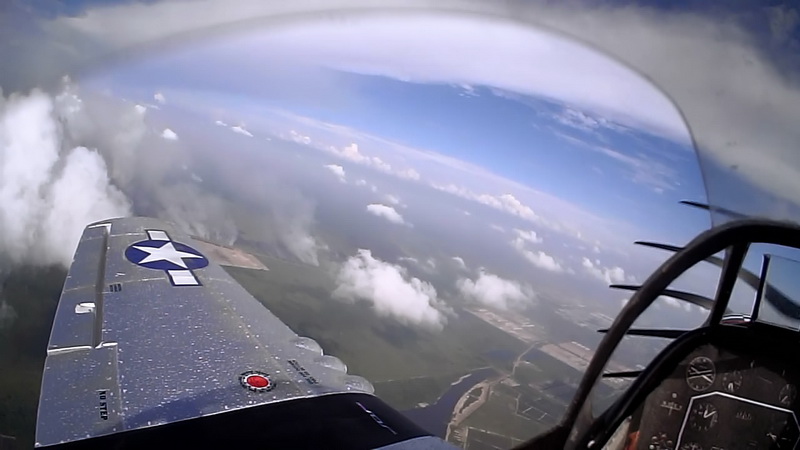
Current status & flight history
 The P-51D Mustang is most challenging FPV platform to fly even in the hands of seasonal FPV pilot. Most people like me wanted to fly this War-bird it is because i like to appreciate the beauty of scale models and the joy being partial part of real aviation experience. Flying inside the cockpit simulating the
The P-51D Mustang is most challenging FPV platform to fly even in the hands of seasonal FPV pilot. Most people like me wanted to fly this War-bird it is because i like to appreciate the beauty of scale models and the joy being partial part of real aviation experience. Flying inside the cockpit simulating the  real flying experience with cockpit view, dashboards, wings and moving mechanism replicating like real planes is the reason why R/C modelers fly them, love and exhibit them in the hangar and most importantly reasons become an R/C pilot modeler enthusiast.
real flying experience with cockpit view, dashboards, wings and moving mechanism replicating like real planes is the reason why R/C modelers fly them, love and exhibit them in the hangar and most importantly reasons become an R/C pilot modeler enthusiast.
Its take lots of patient, time, effort and lots of learning curve, building experience and flying skill sets to perfecting my "scale" flying because the skills set of flying a scale model behinds a cockpit versus a stable glider with full un-obstructed view are completely two different worlds just like riding a bicycle versus driving a truck. One thing for sure once you get the hang of it and successfully flown hours of flights through various altitude, height, climate, perfect landings and all the rough challenges you're more likely to reach the Pinnacle of FPV flying. "Scale" FPV flying is the top of R/C FPV food chain.
Lifespan operation: 3 years (updated on 19 June 2015)
Start operation: mid 2012
Maintenance priority check: Motor mounting
Constant critical issue: None
Maintenance cost per-lifespan: $3.00 - aileron servo replacement (updated on 19 June 2015)
Flight hours accumulated per-lifespan: 284 hours (updated on 19 June 2015)
Best L.O.S distance record: 18km (updated on 19 June 2015)
Est. distance covered per-lifespan: 11,930km (Odo) (updated 19 June 2015)
Best height record: -
Best flight time record per-session: 40min (2200mah 3s 35C) (updated on 19 June 2015)
Best low hovering speed record: 15km/h
Best record for zero thrust landing distance/power failure glide recovery distance: None
Activity status: Still active.
Latest Log:
(updated: 17/4/2015)
- Medical check-up and diagnostic flight at medium range completed after 204 hours of total flight hours for almost 3 years of FPV flight operation to check the health condition of the plane. Reveals left aileron servo twitching randomly which sign of worn out. Immediate replacement has been done with the same servo specification. Tail landing gear loose but minor effect on ground handling. Transparent canopy fade slightly yellow sign of old material aging. Video as shown here: FPV P-51D Mustang - 2015 diagnostic & maintenance day.
Summary
 FPV on P-51D Mustang is a huge head turner, not only it an exotic air frame but also attract War-birds enthusiast and make the crowds goes ohhh!! and ahhh!! Flying a piece of history not only epic but its brought all the glider based FPV competitor down to its knees with its beautiful scale colorfully decorated airframe both range and performance records, you get to have a cool selfie up in the air too. But the epicness will end if you put a Go-Pro on it because it doesn't tolerate extra weight nor have enough space to
FPV on P-51D Mustang is a huge head turner, not only it an exotic air frame but also attract War-birds enthusiast and make the crowds goes ohhh!! and ahhh!! Flying a piece of history not only epic but its brought all the glider based FPV competitor down to its knees with its beautiful scale colorfully decorated airframe both range and performance records, you get to have a cool selfie up in the air too. But the epicness will end if you put a Go-Pro on it because it doesn't tolerate extra weight nor have enough space to  put serious HD cams. Even a MOBIUS HD camera could bog its performance down. Just like the PITTS SPECIAL this P-51D Mustang is extremely small and narrow airframe so setup can be very tricky for intermediate FPV builder. This platform is best to be flown only by experience FPV pilot and with proper FPV system on board to guarantee flawless and safe flight. Unlike flying an FPV glider, the performance of scale airframe such as the Mustang is defined by how the pilot handles the plane not by automation system of sophisticated AP system or airframe alone; too high AOA will increase the drag causes power wastage, too slow will have unnoticeable "sink rate" and pilot need high level of alertness & readiness to counter yaw and roll since its a "negative" pendulum CG. Inexperience FPV pilot will likely to have 'upside down' incident after exited out from the fog, clouds or low visibility incident regardless if your OSD have AHI, gyro assisted or not. So if you have high intention to fly a low winged scale War-bird make sure you don't skip your homework. Earn some basic flight both VLOS and FPV medals first, experiences and researches before entering Pro zone. The next level is the Pitts Special.
put serious HD cams. Even a MOBIUS HD camera could bog its performance down. Just like the PITTS SPECIAL this P-51D Mustang is extremely small and narrow airframe so setup can be very tricky for intermediate FPV builder. This platform is best to be flown only by experience FPV pilot and with proper FPV system on board to guarantee flawless and safe flight. Unlike flying an FPV glider, the performance of scale airframe such as the Mustang is defined by how the pilot handles the plane not by automation system of sophisticated AP system or airframe alone; too high AOA will increase the drag causes power wastage, too slow will have unnoticeable "sink rate" and pilot need high level of alertness & readiness to counter yaw and roll since its a "negative" pendulum CG. Inexperience FPV pilot will likely to have 'upside down' incident after exited out from the fog, clouds or low visibility incident regardless if your OSD have AHI, gyro assisted or not. So if you have high intention to fly a low winged scale War-bird make sure you don't skip your homework. Earn some basic flight both VLOS and FPV medals first, experiences and researches before entering Pro zone. The next level is the Pitts Special.
Videos/Medias![]() Here are some of my video and gallery related to the above topics:
Here are some of my video and gallery related to the above topics:
- Gallery: P-51D Mustang - 960mm
- My Youtube channel: 3DXL
- My Videos:
- FPV P-51D Mustang - Windy Clouds 2023
- FPV Pilot VLOG- Man cave edition- FPV P-51 D Mustang
- FPV P-51D Mustang - Wet Season II
- FPV P-51D Mustang - Old horse on the Clouds
- FPV P-51D Mustang - A New Heart
- FPV P-51D Mustang, Old clunker go round
- FPV P-51D Mustang, Rain cloud surfer
- FPV P-51D Mustang, Cloud trap 2016
- FPV P-51D Mustang - Rough Clouds
- FPV P-51 D Mustang - The Cumulus Clouds flight 7
- FPV P-51D Mustang - 2nd anniversary of flight
- FPV P-51D Mustang - 2015 diagnostic & maintenance day
- FPV P-51D Mustang - Ultimate "Selfie"
- Cloud 9 - Greatest scale FPV adventure P-51D Mustang
- Scale FPV P-51D Mustang - Sky Crawler
- FPV P-51D Mustang - Pilot's Sky Adventure
- FPV P-51D Mustang - Scale Landing
- Scale FPV flight on P-51D Mustang
Shopping list
Here i've listed some raw material, hardware and stuff where you can start building your own FPV platform. The list contain the above hardware and also include some  compatible ones which you can pickup what suits best for your need and your budget. So come dig around and start your tech flying ambition:
compatible ones which you can pickup what suits best for your need and your budget. So come dig around and start your tech flying ambition:
- Platform/Airframe:
- Radio set/combo:
- Flysky TH9x combo (Mode 1)
- Flysky TH9x combo (Mode 2)
- Turnigy 9X combo (Mode 1)
- Turnigy 9X combo (Mode 2)
- FrSKY TARANIS X9D ACCST 2.4ghz transmitter version B
- FrSky DHT 8CH DIY compatible telemetry transmitter module (Advance installation required)
- Frsky V8FR-II 2.4ghz 8ch receiver HV version
- Frsky V8R7-II 2.4ghz 8ch receiver
- Motor/ESC/BEC:
- Servo:
- E-MAX ES08MA analog metal micro servo
- TOWER PRO SG90 micro servo 9g (Most popular among r/c plane builder similar to HXT900 servo)
- TOWER PRO MG995 metal geared micro servo 9g
- TOWER PRO SG90S metal geared micro servo 9g
- E-MAX ES3154 mini
- VWINRC MG90D metal gear servo 9g
- E-MAX ES08MA analog metal gear micro servo
- Camera/HD/DVR:
- FPV 800TVL mini CMOS NTSC
- 700TVL CMOS 1280x960 resolution nano
- BOSCAM CM205 5.8ghz FPV wireless mini CMOS camera (Excellent for super nano indoor FPV models, tricky but good stuff)
- Keychain 808 #16 V1 HD camera
- Keychain 808 #16 V3 HD (With live output and HD recording, most popular among r/c and FPV use)
- 1/3 600TVL CMOS NTSC (Best on mini 200 size FPV platform with advantage of generic interchangeable lens)
- 1/3 600TVL CMOS PAL (Best on mini 200 size FPV platform with advantage of generic interchangeable lens)
- FATSHARK 1/3 600TVL CMOS NTSC/PAL (Best on mini 200 size FPV platform with advantage of generic interchangeable lens)
- BOSCAM HD19 Plus Explorer Full 1080p RC Aerial Photography FPV camera
- Mobius 1080p HD (Excellent quality)
- Y3000 720p HD mini (Super lightweight)
- Flight controller/AP System/OSD:
- FEIYU TECH FY 41AP Lite autopilot (Quick Plug N Fly autopilot system)
- REMZIBI OSD v1.79 GPS (Small enough to fit into any plane and give accurate measurement)
- Simple 3-axis flight stabilizer for airplane
- SKYLARK FPV OSD with GPS
- SKYLARK Dianmu OSD with GPS and Barometer
- APM 2.5.2 flight board (For advance ARDUINO user)
- APM 2.6 flight board (For advance ARDUINO user)
- APM 2.6 with GPS (For advance ARDUINO user and extended autonomous flight)
- APM 2.6 with GPS + OSD + radio telemetry system (For advance ARDUINO user and extended autonomous flight)
- PIXHAWK 2.3 flight controller ATM32F4 APM PX4 (For advance ARDUINO user and extended autonomous flight)
- RCD 3060/Simple OSD (Super budget)
- MWC Mega 3.0 MegapirateNG flight controller (For advance ARDUINO user and most popular for budget open source use)
- HK G-OSDIII with GPS (Budget but not all that accurate gauge)
- ARKBIRD OSD/GPS Autopilot system (Excellent for fixed winged)
- ARKBIRD Tiny bakancer/stabilizer controller board for fixed winged plane
- Video transmitter/combo:
- BOSCAM 2.4ghz 500mw transmitter + receiver (Better obstacle penetration but recomended your radio controller uses other than 2.4ghz to avoid conflict)
- BOSCAM 5.8ghz 200mw transmiter (Basic)
- BOSCAM 5.8Ghz 400w transmitter
- BOSCAM 5.8ghz 8ch receiver
- BOSCAM 5.8Ghz 400w transmitter + receiver combo
- BOSCAM 5.8ghz 600mw transmitter 32ch (Medium range)
- BOSCAM 5.8ghz 600mw transmitter + receiver combo 32ch (Medium range)
- BOSCAM RC305 8ch wireless Audio/Video receiver (Basic requirement for 5.8ghz)
- BOSCAM 5.8ghz 200mw transmitter + receiver combo pack
- BOSCAM AIO FPV video goggle GS920 with receiver 2.4ghz/5.8ghz (Excellent for serious FPV flyer)
- BOSCAM AIO FPV video goggle GS922 with diversified receiver and built-in DVR
- SKYZONE SKY-01 FPV video goggle with receiver 5.8ghz diversity antenna build-in (Excellent for serious FPV flyer)
- SKYZONE SKY-700D FPV 5.8ghz 32ch monitor + DVR (Excellent for starter and complete DVR combo)
- SKYZONE RC702 SKY-702 5.8ghz 7" AIO diversity receiver monitor
- FPV 7" TFT LCD monitor 800x480 screen with audio (Excellent for budget beginner DIY FPV build)
- FATSHARK Predator V2 FPV video goggle complete combo package (Popular choice but only works with FATSHARK video/audio transmitter compatibles)
- FATSHARK Teleporter V3 FPV video goggle complete combo package HD (Popular choice but only works with FATSHARK video/audio transmitter compatibles)
- FATSHARK DOMINATOR FPV video goggle (Excellent for expert/performance DIY FPV system)
- FATSHARK BASE HD (Popular customizable choice but only works with FATSHARK video/audio transmitter compatibles)
- Battery:
- YKS 2200mah 3s 25c 11.1v
- High rate 2200mah 3s 25c 11.1v
- High rate 2200mah 3s 35c 11.1v
- WILD SCORPION 2200mah 3s 30c 11.1v
- WILD SCORPION 2200mah 3s 35c 11.1v
- ACE 2200mah 3s 20c 11.1v (Really good performance)
- ACE 2200mah 3s 25c 11.1v (Really good performance)
- ACE 2200mah 3s 30c 11.1v (Really good performance)
- LION POWER 2200mah 3s 25c 11.1v
- LION POWER 2200mah 3s 30c 11.1v
- LION POWER 2200mah 3s 35c 11.1v

Building threads/Referral
If you don't know where to begin with i recommend you to start reading some guides, wikis and building tips from popular online resources as listed below. You might find me hanging around some popular R/C and FPV forum below.
- Rcgroups Scale model FPV build discussion
- Rcgroups FPV forum
- http://www.rcgroups.com
- http://www.fpvlab.com
- http://www.diydrones.com
- http://www.rcuniverse.com
- http://www.flitetest.com
- http://fpv-forum.com
- http://www.rcexplorer.se
- http://homepages.paradise.net.nz/bhabbott/Servo.html
